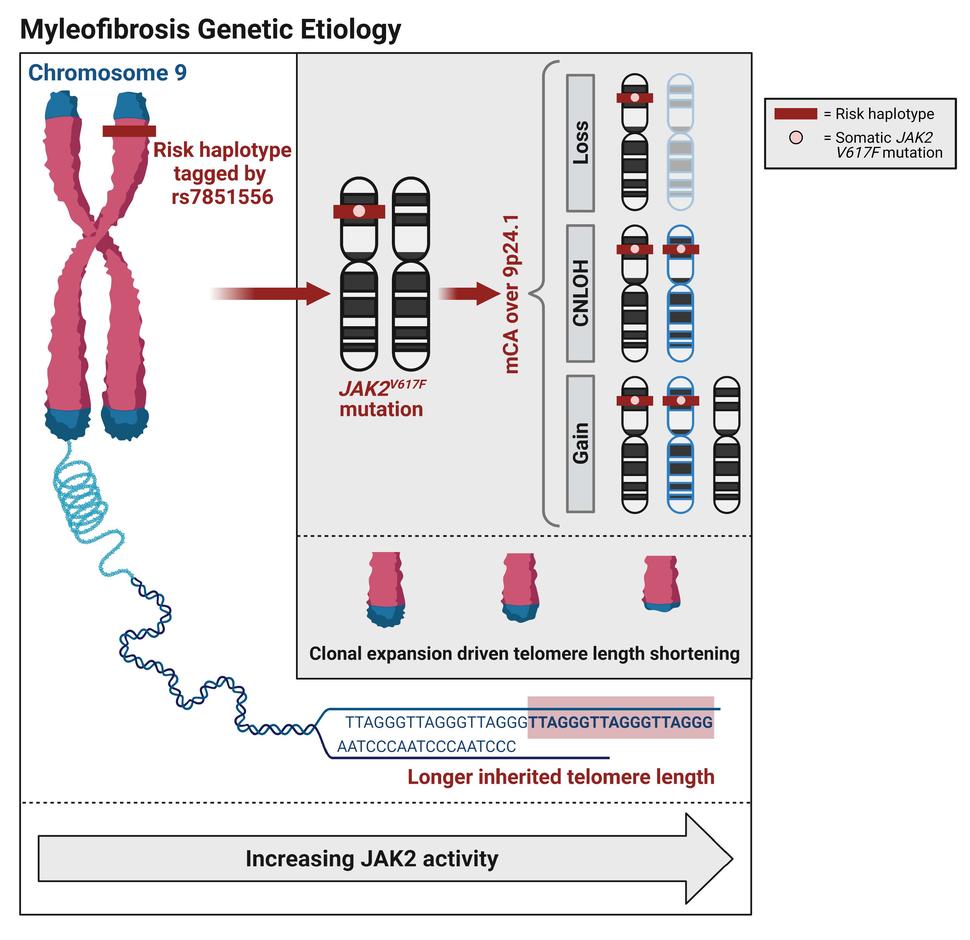Germline-Somatic Interactions, Telomere Biology Affect Myelofibrosis Risk
, by Jennifer K. Loukissas, M.P.P.
DCEG investigators have identified six germline susceptibility loci for the rare myeloproliferative neoplasm (MPN) myelofibrosis; four overlap with loci previously identified for overall MPN. The findings were published on September 8, 2022, in Nature Communications.
Patients with myelofibrosis are at high risk for progression to acute myeloid leukemia. Previous research has focused on the broad category of MPN; myelofibrosis affects a small number of patients.
The relatively large size of the study—about 900 patients with myelofibrosis who underwent hematopoietic cell transplant at a Center for International Blood and Marrow Transplant Research (CIBMTR) reporting center—allowed the team greater statistical power for integrated genomic characterization of germline and somatic events. The study team reported on a germline-somatic interaction between JAK2 germline variation leading to susceptibility to JAK2 V617F mutations and subsequent acquisition of a chromosomal alteration at the locus further promoting the mutation. They also observed associations between genetically predicted telomere length and acquisition of somatic alteration of JAK2, which may explain the role of telomere biology in myelofibrosis susceptibility. The findings could inform avenues for improved clinical management of these patients.
This work was possible because of an existing collaboration between DCEG investigators in the Clinical Genetics and Integrative Tumor Epidemiology Branches and researchers at CIBMTR.
Reference
Brown D., et al. Germline-somatic JAK2 interactions are associated with clonal expansion in myelofibrosis. Nature Communications 2022.
